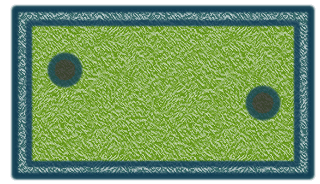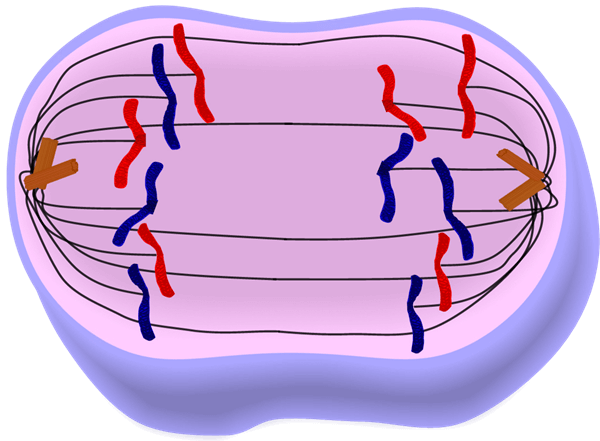Cell Growth and Division
Why do cells divide?
- large cells have difficulty transporting enough nutrients across their membran
Cells are limited in size by their SURFACE AREA and VOLUME ratio
CELL DIVISION - Process where a cell splits into two identical daughter cells. It occurs it two main phases.
-Mitosis - division of the
nucleus
-Cytokinesis - division of the cytoplasm
CHROMOSOMES
-Made of DNA,containing the cell's genetic code
-Found in Nucleus
- Each chromosome has a matching pair, homologous pair
-Number depends on organism
CELL CYCLE - events cells go through as they grow and divide
Interphase (longest phase)
G1 - first growth (gap) phase
Synthesis - DNA makes a copy
G2 - second growth (gap) phase, preparing for mitosis
Mitosis - nucleus divides, ensuring each new cell has the exact number of chromosomes as parent
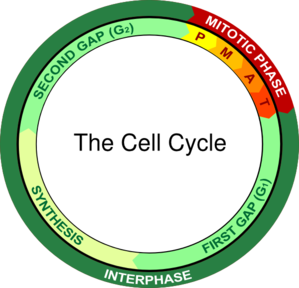
Mitosis
Interphase
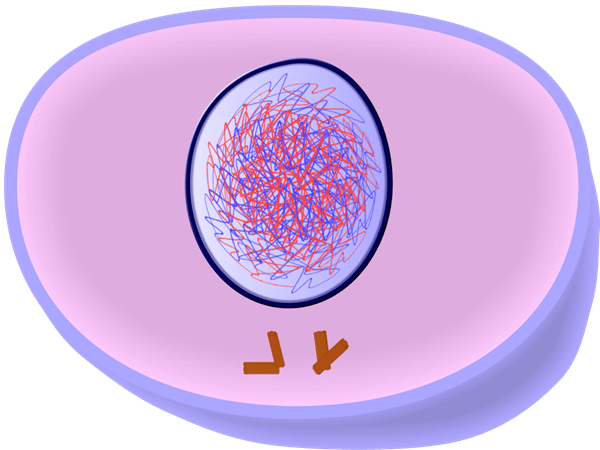
(technically not part of mitosis, but it is included in the cell cycle)
Cell is in a resting phase, performing cell functions
DNA replicates (copies)
Organelles double in number, to prepare for division
Prophase
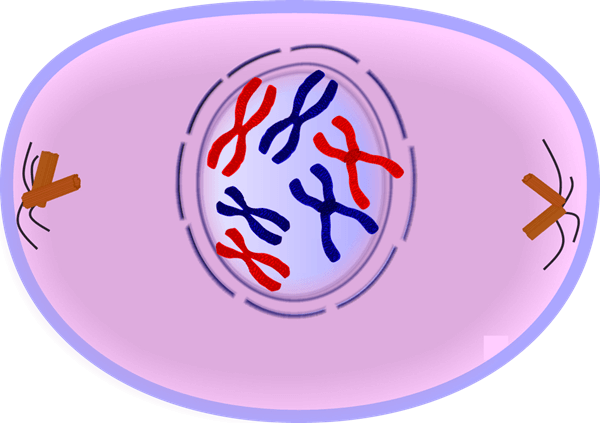
1. chromosomes visible (chromatids)
2. centrioles migrate to the poles
3. nuclear membrane disappears
4. nucleolus disappears
5. spindle form
Metaphase
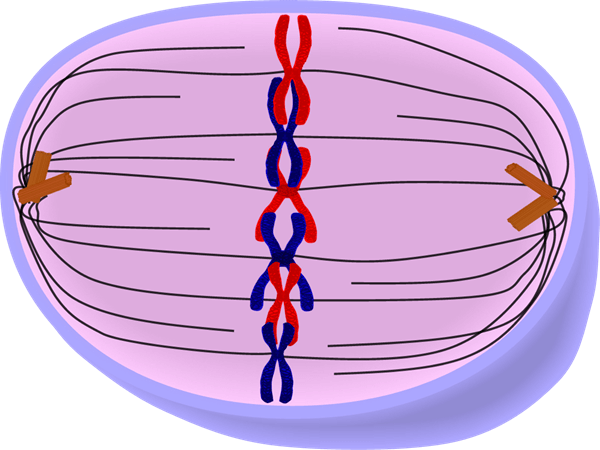
Chromosomes line up along the equator
Anaphase
Chromatids separate
Telophase and Cytokinesis
1. chromosomes disappear (becoming chromatin)
2. nuclear membrane reforms
3. nucleoli reappears
4. spindle disappears
5. centrioles duplicate
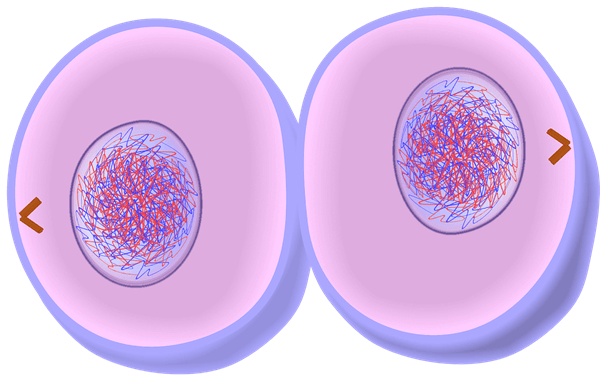
- division of the cytoplasm to form 2 new daughter cells
- organelles are divided
- daughter cells are genetically identical
- cells return to interphase
......cytokinesis takes two forms, depending on the cell....
Animal Cells - cell pinches inward and then splits into two
Plants - a new cell wall (called the cell plate) forms between the two new cells
